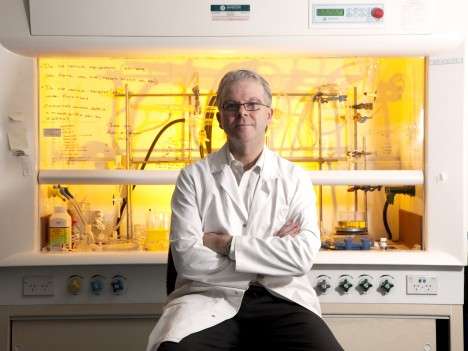Team combats human parainfluenza virus

Gold Coast research has made a giant leap forward in understanding one of the most common causes of respiratory infections worldwide.
Research by Professor Mark von Itzstein and his team from Griffith University's Institute for Glycomics has made a breakthrough in tackling human parainfluenza virus, which causes respiratory infections such as croup, bronchiolitis and pneumonia.
This highly-infectious virus is the leading cause of upper and lower respiratory tract disease in young children, and each year results in hundreds of thousands of deaths in developing countries and thousands of hospitalisations world-wide.
The team for the first time has demonstrated how a protein associated with the surface of virus, haemagglutinin-neuraminidase, engages specific sugars to allow the virus to spread and cause infection.
Institute Director Professor Mark von Itzstein, of the Institute for Glycomics, said research findings published in the international journal Angewandte Chemie International Edition this week offers a new direction in drug discovery for the treatment of respiratory infections caused by this virus.
"This study provides us exciting new information about how this virus is released from infected cells and opens the door for novel antiviral drug discovery research.
"Effectively, the virus' haemagglutinin-neuraminidase reacts with a carbohydrate to form an intermediate that then is hydrolysed, enabling the virus to escape from the infected cell surface and cause further infection.
"We have developed a compound that allows the haemagglutinin-neuraminidase to form a similar intermediate, but reduces the ability of the virus to be released and consequently reduces any further infection. This compound provides a drug-like candidate," he said.
The Institute for Glycomics is a world leader in the study of glycans and carbohydrates (sugars) and how they behave in terms of disease prevention and cure.
"Australia continues to significantly benefit from the attraction of outstanding research talent from all over the world," said Professor von Itzstein.
More information: Angewandte Chemie International Edition, onlinelibrary.wiley.com/doi/10 … e.201500511/abstract
Journal information: Angewandte Chemie International Edition
Provided by Griffith University


















